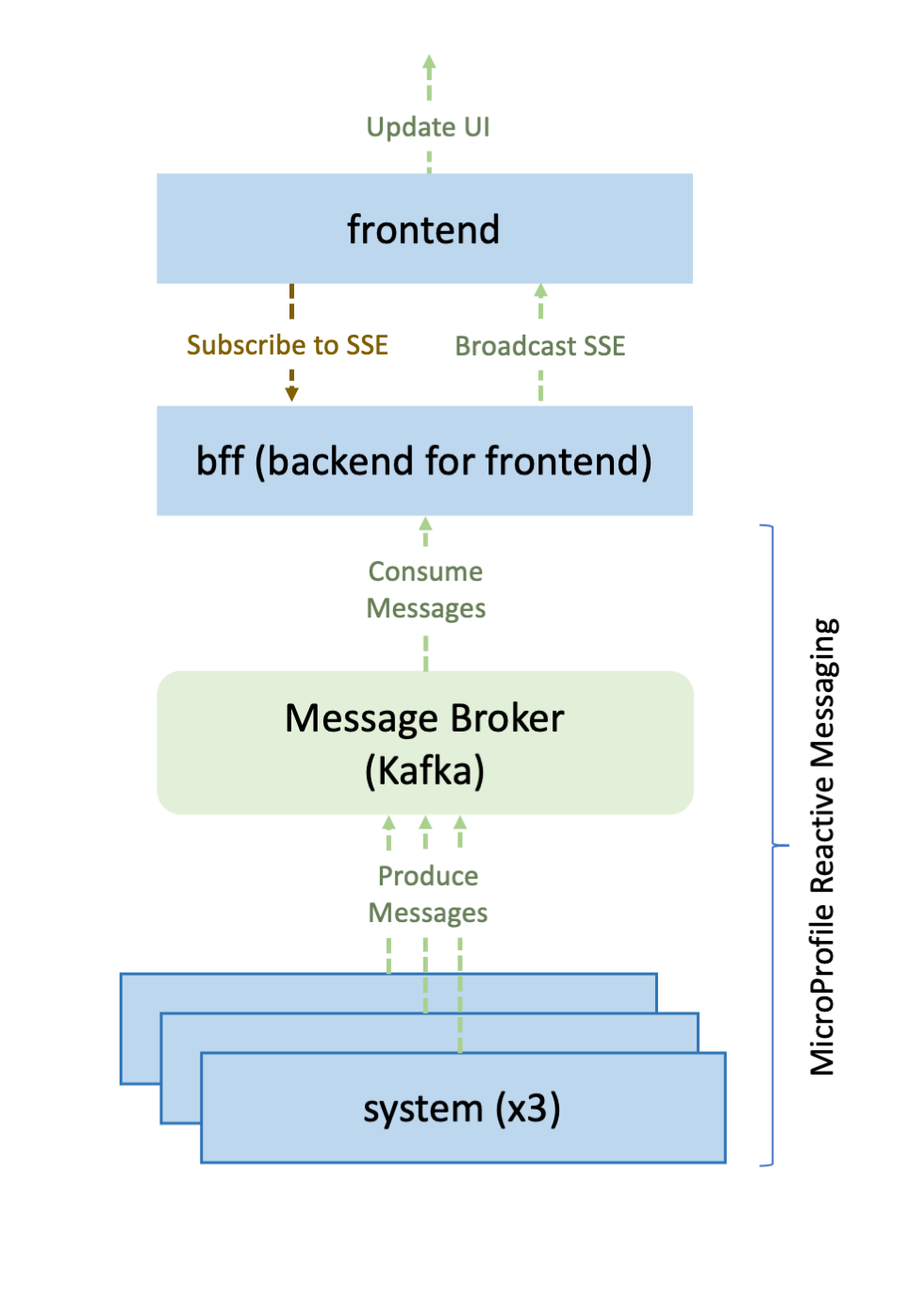Learn how to stream updates from a MicroProfile Reactive Messaging service to a front-end client by using Server-Sent Events (SSE).
You will learn how to stream messages from a MicroProfile Reactive Messaging service to a front-end client by using Server-Sent Events (SSE).
MicroProfile Reactive Messaging provides an easy way for Java services to send requests to other Java services, and asynchronously receive and process the responses as a stream of events. SSE provides a framework to stream the data in these events to a browser client.
What is SSE?
Server-Sent Events is an API that allows clients to subscribe to a stream of events that is pushed from a server. First, the client makes a connection with the server over HTTP. The server continuously pushes events to the client as long as the connection persists. SSE differs from traditional HTTP requests, which use one request for one response. SSE also differs from Web Sockets in that SSE is unidirectional from the server to the client, and Web Sockets allow for bidirectional communication.
For example, an application that provides real-time stock quotes might use SSE to push price updates from the server to the browser as soon as the server receives them. Such an application wouldn’t need Web Sockets because the data travels in only one direction, and polling the server by using HTTP requests wouldn’t provide real-time updates.
The application that you will build in this guide consists of a frontend service, a bff (backend for frontend) service, and three instances of a system service. The system services periodically publish messages that contain their hostname and current system load. The bff service receives the messages from the system services and pushes the contents as SSE to a JavaScript client in the frontend service. This client uses the events to update a table in the UI that displays each system’s hostname and its periodically updating load. The following diagram depicts the application that is used in this guide:

In this guide, you will set up the bff service by creating an endpoint that clients can use to subscribe to events. You will also enable the service to read from the reactive messaging channel and push the contents to subscribers via SSE. After that, you will configure the Kafka connectors to allow the bff service to receive messages from the system services. Finally, you will configure the client in the frontend service to subscribe to these events, consume them, and display them in the UI.
Created by
The Open Liberty Project team
